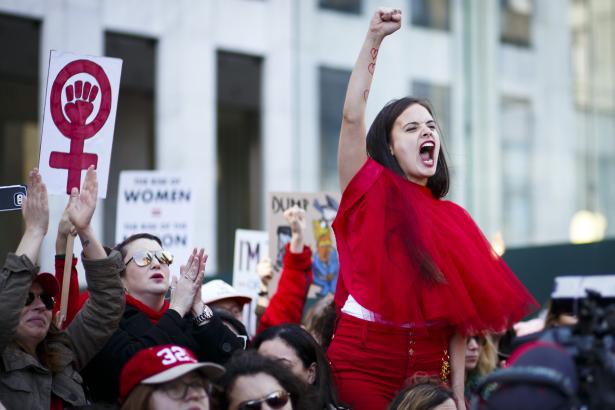In theory, International Women’s Day (celebrated every year on March 8) is an event to commemorate the contributions of women around the world and advance the conversation surrounding a wide range of issues related to gender inequity, such as the pay gap, racial and sexual violence, and labor rights. But in practice, it’s mainly become a way for brands to try to sell you shit.
Who we are as individuals fuels our collective success. In honor of #IWD2019, we’re sharing the many perspectives at American Express that create a dynamic, inclusive workplace. #TeamAmex #BalanceforBetter pic.twitter.com/Cu7zRuvra6
— American Express (@AmericanExpress) March 8, 2019
Here’s to the women who bring leadership, strength and purpose to the world of coffee. Meet just a few of the many awe-inspiring women who make Starbucks possible. #StrongLikeCoffee #IWD2019 pic.twitter.com/oaSD4R4Hqm
— Starbucks Coffee (@Starbucks) March 8, 2019
We’re celebrating the power of sisterhood with a special collection of tees for #IWD2019 featuring the words of women who are raising other's voices, just like we do with Gap Inc’s educational program P.A.C.E. Learn more: https://t.co/lSpwXrnOmm. pic.twitter.com/HmKO2qv2YQ
— Gap (@Gap) March 7, 2019
The fact that International Women’s Day has gotten so much traction as a marketing tactic is particularly ironic, given that it basically runs counter to the origins of the holiday, which has its roots in the anticapitalist, U.S. socialist movement.
According to historian Sharon Smith, International Women’s Day was inspired by the success of an almost three-month-long ladies’ garment workers’ strike in 1909, which came to be known as the “Uprising of 20,000” — which was called for by a 23-year-old woman, Clara Lemlich. (During the strike, she was beaten, broke six ribs and was arrested 17 times.) “At the time, union official leadership was almost entirely made up of men, but these women workers took charge of their own strike,” Smith told Teen Vogue. After almost three months of months of protest, the workers won modest gains, including a 52-hour work-week and the right to unionize. The success of the effort was particularly notable because the movement was primarily led by a group of women with very little economic capitol: Jewish immigrant women in their teens and 20s, at a time when anti-immigrant sentiment was at a fever pitch.
The triumph of the ladies’ garment workers’ efforts to have their union recognized led to Socialists all over the country organizing “Women’s Day” marches all over the country the following year, in March 1910. Inspired by the American women’s victory, that year Clara Zetkin, a German Marxist feminist theorist, proposed International Women’s Day at the International Socialist Women’s Conference in Copenhagen that year. In 1911, it was honored for the first time on March 8th, with hundreds of thousands of European women turning out to campaign for labor rights and the right to vote.
On March 8th, 1917, Russian women issued a “Bread and Peace” strike in response to the deaths of 2 million Russian soldiers in World War I, demanding the end of tsarism and a solution to national food shortages. This event has largely been credited with prompting Tsar Nicolas II’s abdication from the throne and Russian women being granted the right to vote; in the following decades, it was primarily celebrated in communist and socialist countries, until the United Nations officially started celebrating International Women’s Day in 1975.
Given it’s socialist history, the U.S. stayed away from it — though as Kristen R. Ghodsee, author of Women Have Better Sex Under Socialism, pointed out in the New York Times today, there was a brief moment when it almost became a holiday. In 1994, a group 80 U.S. Senators, including Maxine Waters, introduced a bill to officially recognize it. The bill never made it out of committee.
So the next time you see a multi-billion-dollar fast fashion company start using the language of International Women’s Day to sell limited-edition tees, or brands comparing women to caffeinated beverages on Twitter, think instead of the millions of badass women who risked their lives to stick it to the Man and take to the streets to fight for their working-class compatriots.


Spread the word